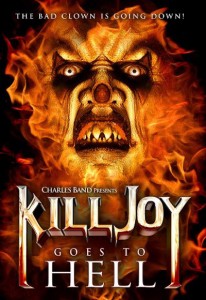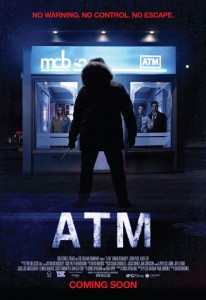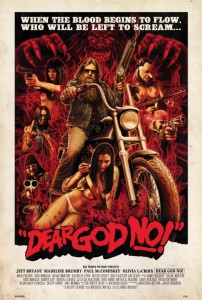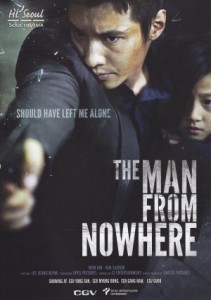
Killjoy Goes to Hell

Plot: Killjoy (Trent Haaga) is on trial in Hell due to his failure to kill Sandie (Jessica Whitaker). Beelzebub (Stephen F. Cardwell) believes he’s not evil enough anymore and Jezabeth (Aqueela Zoll) is prosecuting him. Coming to his defense are his former partners in crime, Batty Boop (Victoria De Mare), Punchy the Clown (Al Burke) and Freakshow (Tai Chan Ngo) thanks to the help of his lawyer, Skid Mark (John Karyus). If Killjoy loses this case, he vanishes forever.
Review: I hated the first two “Killjoy” films! I found them to be very boring and, as is with most of Full Moon’s urban horror films, very racially offensive. Being the Cinemasochist that I am, I still sat through the third installment and surprisingly enjoyed it. The racism was gone, the mayhem was cranked up to eleven and Killjoy’s cronies worked well. The film still had a strong comedic feel like the first two, but it worked better that time around.
Thanks to that, I actually was looking forward to the fourth installment of the series (something I never thought I’d say)! While it’s a step down from the last installment, it’s miles better than the first two. This one practically ditches the horror elements in favor of putting Killjoy on trial in Hell. Though this grew tiresome, it was a novel idea and the cast involved was very good (which is rare for a Full Moon feature).
To pad out the time, we have Detective Ericson (Jason R. Moore) and Detective Grimley (Cecil Burroughs) still investigating Sandie’s case. She’s been institutionalized and suffers from constant laughing and hysteria (the way she defeated Killjoy in the last film was laughing at him, which deemed him worthless). She was tried for the murder of her friends (because nobody would believe her story about Killjoy) but released on insanity. This angle worked really well as it showed the aftermath of a supernatural murder in a rather realistic light. John Lechago even incorporates Killjoy’s case in real life, as many of his demonic nicknames are stripped away as his court case goes on. They were all listed in police files, but are mysteriously disappearing.
While both the trial and real life situations work, they outwear their welcome. It’s not until the finale, where Sandie is transported to Hell to stand trial, that the film begins to pick up. We get a showdown between the guards and Hellions, including one where Killjoy can redeem himself (something in which could have made up an entire film). It energizes the film, but comes in a little too late.
John Lechago may have slipped up halfway through this film, but I’m still giving him high praise. He stepped into the series in the third film and actually took a worthless series and made it entertaining. His flair and surprising finesse suit the “Killjoy” films well. While I wish he’d hold back on the humor and go straight horror (as Killjoy’s make-up is actually unsettling and could benefit from being in an actual scary film), he finds a nice middle ground. If a fifth “Killjoy” film must be made, keep Lechago on board.
Final Rating: B-
ATM

Plot: Three co-workers (Brian Geraghty, Josh Peck, Alice Eve) are trapped in an ATM vestibule overnight thanks to a psychotic killer who is terrorizing them.
Review: I wanted to like “ATM”. I really did! I liked the idea of being trapped in an ATM and being stalked by a killer. The claustrophobic feel practically writes itself. It’s a challenge to have it remain engrossing for an hour and a half, but David Brooks does a solid job of doing so. He takes a lot of liberties in doing so, though.
One major gripe I had with the film was a glaring plot hole. It’s announced that the only way to enter the ATM vestibule is with a debit or credit card. This allows a person to use their card to get past the security lock. I’m not sure if this is an actuality or plot device, as all of the ATM machines around me are attached to a building and not concealed in a vestibule. Whatever the case may be, it was a sound reason to keep the killer out. Except that, halfway through the film, the trio lose one of their cards in the machine and the other isn’t working. They exit the vestibule to save a friend, only to have to rush back inside. They somehow got back in without having to swipe a card. If this is the case, why can’t the killer come in?
It seems for every good move Brooks makes, he stumbles almost immediately after. He tries setting up tension between the three, only to have one of them (usually the obnoxious one) to be the voice of reason and eradicating the argument. He plays up the fact that it’s the dead of winter and freezing, but wouldn’t an ATM vestibule have heating? He has the killer cut the wires to their car’s engine, yet he’s able to drive it later.
Even when it comes to the ending, which is diabolically clever, he sullies it by spelling it out too much. It shows a lack of faith in the audience. Once the twist is made, it’s clear to anybody who’s been paying attention how they were set up. Yet, Brooks has to replay everything and spell it out, just in case some viewers were bored and tuned out.
Brooks shows potential as a director. He can build suspense, can handle his actors (who, I should state, were in fine form) and can toy with the audience’s emotions. What he lacks is discipline. He doesn’t know when to quit and let the story speak for itself. Nor does he review his footage and iron out the flaws. He, like this movie, shows promise, but continually falters when it comes time to deliver.
Final Rating: C+
Dear God No!

Plot: A gang of outlaw bikers led by Jett (Jett Bryant) break into the home of disgraced Anthropologist Dr. Marco (Paul McComiskey). As they trash the place and rape the women (including a pregnant one), Marco’s experiment breaks free from the basement. The bikers must now contend with a monster.
Review: James Bickert took the blueprints of a seventies biker grind house flick and threw it all on screen. He didn’t iron out the details or add any flavor. All he did was follow the guidelines. Filthy bikers, booze, blood and oodles of naked women. While this sounds appealing to “trash” lovers such as myself, one has to differentiate themselves from the pack. Why should I waste my time with “Dear God No!” when I could watch one of the seventies biker films it’s “honoring” instead?
Bickert does eventually try to add his own seasoning into the mix. He essentially jumps ahead in the B-movie cookbook and throws in the recipe for a monster flick. This brings the biker and monster genres together into one whole. Well, for the final twenty minutes away. The first hour is devoted to build up and a lot of padding for a short movie (seventy-five minutes when the credits are taken out).
It’s here where the actors put on their biker attire and spout out recycled dialogue. They occasionally hit their mark, such as the scene at the gas station, but mostly reek of stereotypes. The only actor that fit’s the role is Jett Bryant, whose wickedly awesome beard and demeanor suits that of the biker. The rest of the crew forcefully utter their inane dialogue and smoke and drink in hopes of covering their tracks. As for the Doctor and his endangered cohorts, they’re simply there as fodder. His daughter, Edna (Madeline Brumby), gets a bit better treatment, but Brumby puts forth a weak performance.
Once the monster is unleashed, the film somehow stumbles even more. At first, I was ecstatic to see something new. Then I slowly realized that the two genres didn’t mix together. The monster, like the bikers, felt forced. The costume reflected that of something out of a seventies B-movie (which I appreciated), but his actions are lackadaisical. A pat on the back to Bickert for trying to add a dash of originality, but it’s too dry.
Final Rating: C
The Man from Nowhere

Plot: Cha Tae-sik (Won Bin) is a widowed pawnshop keeper who strikes up an unusual friendship with Jeong So-mi (Kim Sae-ron), his young next-door neighbor. When drug dealers leave a hidden stash in a camera pouch they leave at his pawn shop, all hell breaks loose. They come to take it back with deadly force, but Cha’s violent past reemerges. After the little girl is kidnapped, he must save her.
Review: I’ve seen this film compared to “Taken” and I think that’s unfair. While both follow similar paths (girl being kidnapped and a man taking the law into his own hands to save her), their dramatic elements differ greatly. “Taken” dealt directly with a father and his kidnapped daughter. Lee Jeong-beom’s film deals with a depressed widow who finds solace in a young girl and has to save her. There are similarities, but the films play out differently.
I feel “Taken” was more a straight-laced action film, where “The Man from Nowhere” deals more in the dramatic field. There are long stretches (especially early on) where the relationship between Cha and Jeong is developed, as well as flashbacks to Cha’s morbid past (one of two scenes which had me misty eyed, the other being the ending). “Taken” only flirted with that (and that’s not to discredit “Taken”, which is a fine film).
That’s not to say “The Man from Nowhere” doesn’t feature slam-bang action. There are quite a few heavy hitting scenes where bullets fly and blood is shed. Like in “Taken”, they’re driven by one man’s desire to save the one he loves and this film falls into the trap of making him a one-man wrecking crew. This is fine for entertainment purposes (and trust me, the action scenes deliver immensely), but go against the vulnerability the character has. More so here, as Cha’s emotional baggage is brought up heavily.
Thanks to Lee’s tight grip on the characters and their motives, this only becomes a minor problem. That and the action scenes are choreographed so well and get the blood pumping that it’s easy to forget about Cha’s invincibility. Even the drug dealers are fleshed out a bit. Not so much in back story, but in certain characteristics. One of them comes across as a snooty rich kid with money to blow (mainly on drugs, go figure). This is the polar opposite of Cha and Jeong’s lifestyle, which Lee shows by contrasting the two immediately after one another.
“The Man from Nowhere” delivers the goods in the action department. What’s nice is that it spends so much time developing the characters. This draws the viewer in emotionally and grabs them by the throat. Not only are you getting exhilarating action sequences, but are also having your heartstrings tugged at. This prevents the film from becoming a throwaway action fest and standing out as a strong dramatic film, as well!
Final Rating: A-
